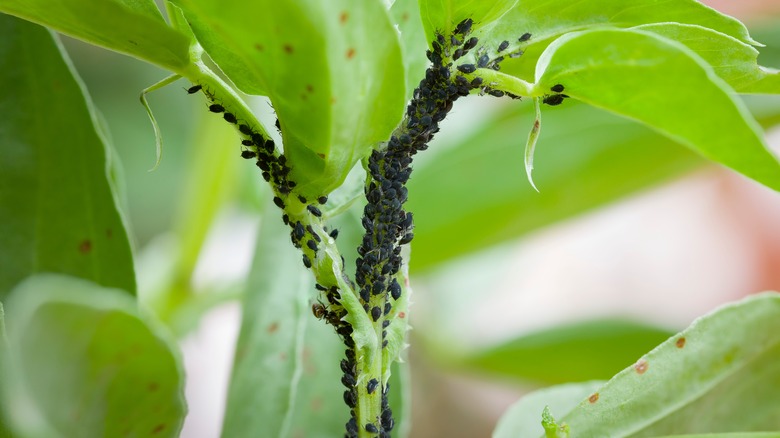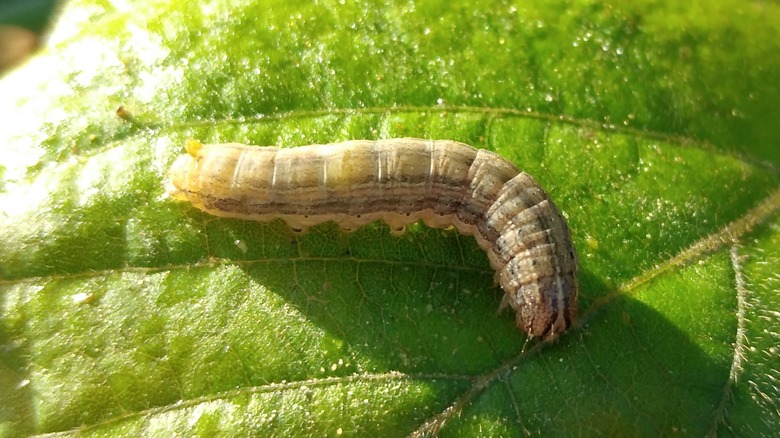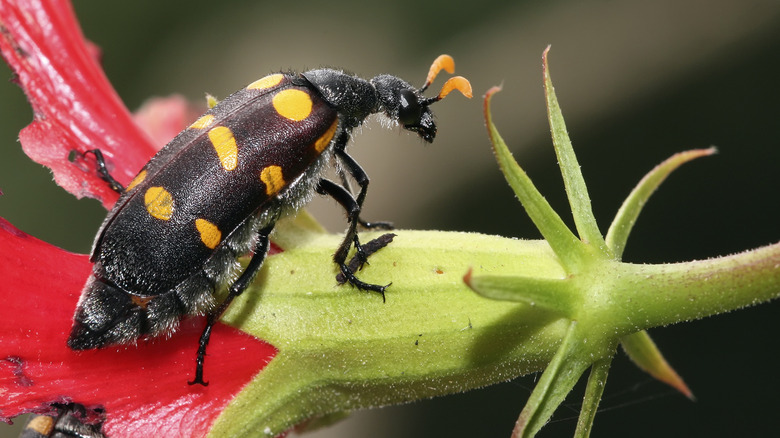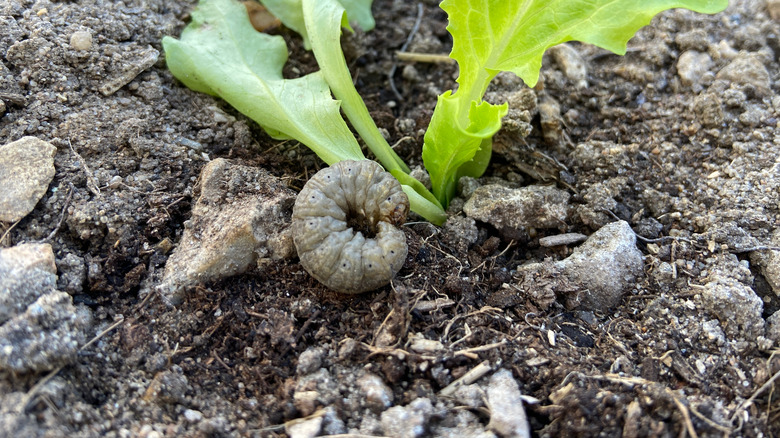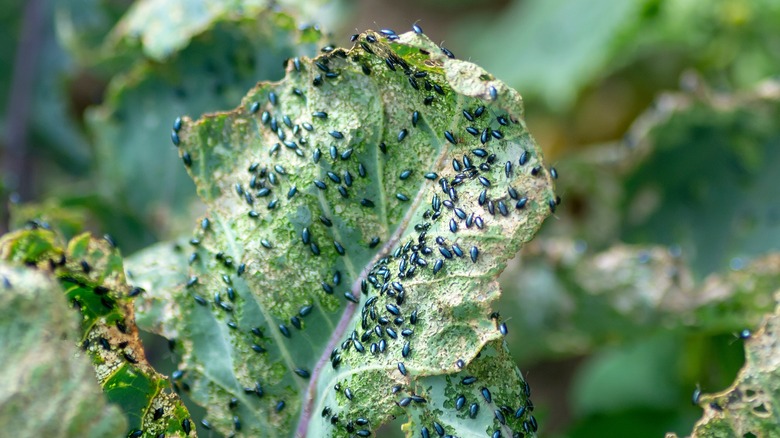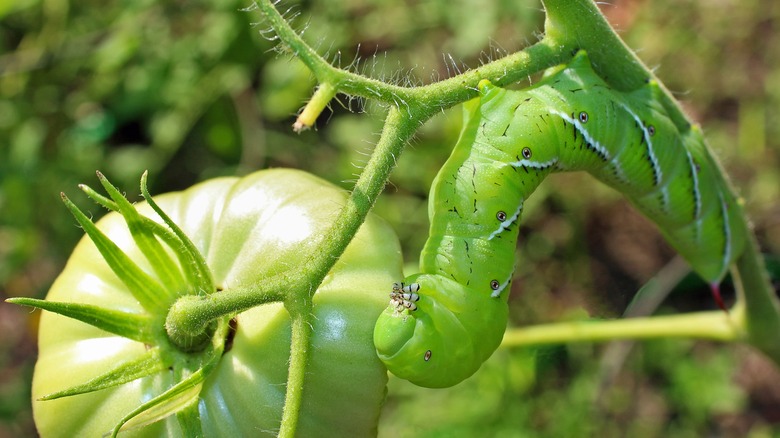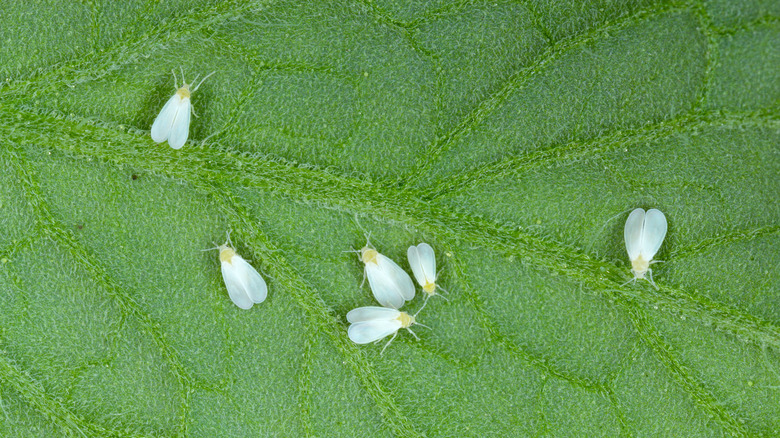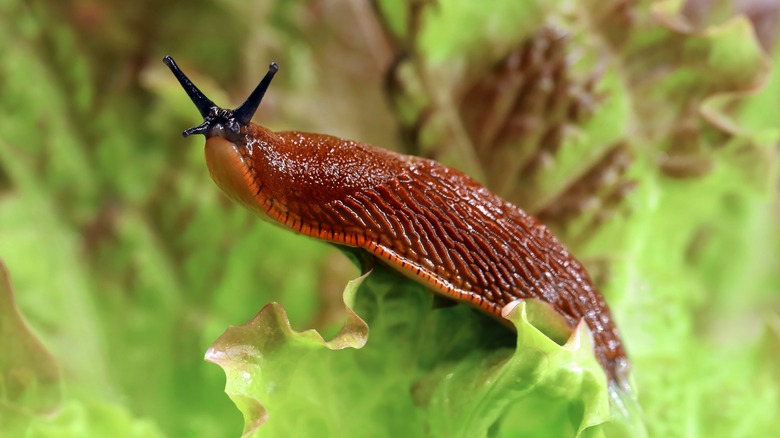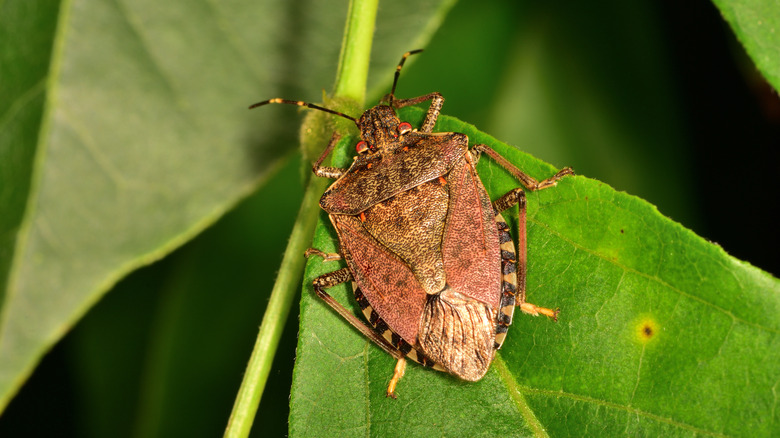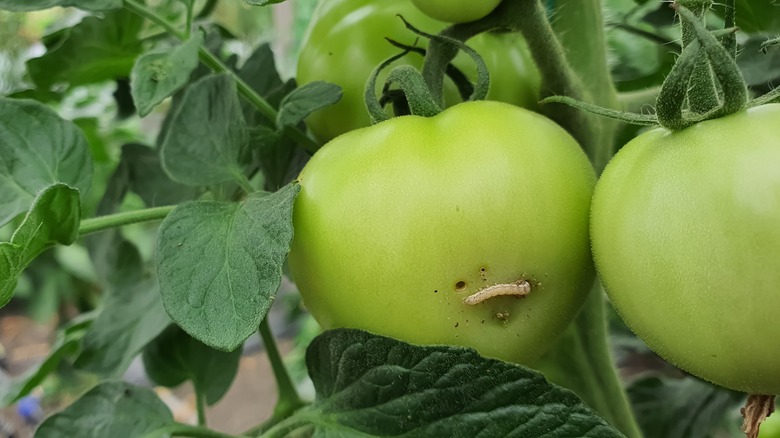10 Common Pests That'll Attack Your Tomatoes In The Garden
When it comes to the worst garden pests that might try to eat the fruit and vegetables you attempt to grow, some may spend their days targeting your tomato plants. Indeed, while you may think that tomatoes are a tasty treat, plenty of pests feel the same way, which is why they love to dine on this garden favorite. On top of that, there is a fair share of critters who will make a meal of the leaves on your tomato plants.
For instance, there are larger creatures who might invade your yard for what they perceive as an easy meal. This includes deer and skunks as well as opportunistic omnivores like raccoons and even coyotes. Although you may be able to put up a few fences to keep these animals away from your garden, there are a range of other tiny pests that you may find attacking the tomatoes you try to grow.
1. Aphids
There are various kinds of aphids, and plenty of them like to eat the tomatoes they come across in gardens. Although these rather annoying critters are relatively tiny, they can still cause a lot of damage to your plants when they invade your yard in large numbers. Although they don't tend to consume entire plants, they definitely harm them and also leave them to be attacked by other pests and diseases. Fortunately, other creatures consume aphids, which can help keep them off of your tomatoes.
2. Armyworms
If there's something eating your tomatoes, then you may want to keep an eye out for gray or black larvae that can be identified by the cream or yellow-colored stripes on their bodies. These happen to be armyworms, and they adore tomatoes that have already ripened or even overripened. To see if this is what's been eating away at your plants, check the leaves on your tomatoes. If you can get on top of the problem early, then it will be much easier to manage.
3. Blister beetles
Blister beetles certainly don't sound like a critter that you want wandering around your garden, and that's pretty darn accurate. Another pest that will gladly eat your tomatoes, they also release a substance known as cantharidin that can cause blisters on humans. Protect both yourself and your tomatoes from this nasty critter by using row covers over your plants. If you do spot blister beetles — which are black, gray, or red — then be sure to wear gloves when quickly and carefully removing them from your garden.
4. Cutworms
Although you won't find cutworms feasting on the fruit of your tomato plants, they will target the stems, roots, and seedlings. When they do this, the plant can't soak up water and will eventually die. If you spot plants that are suddenly suffering in your garden, then there may be cutworms in the soil. You'll know you've seen one when you find a worm that's around 2 inches long and is black, brown, pink, or green. Pick them out as soon as you see them, and protect vulnerable seedlings with barriers made of aluminum foil or cardboard.
5. Flea beetles
Although flea beetles are indeed beetles, they look like fleas, hence the name. As tiny as the other pests that share their moniker, they are black or brown and have stripes on their bodies that are white or yellow. You should also know that flea beetles will go after your germinating tomato seeds and pass diseases on to your plants. To deal with these pests, use row covers and traps that feature sticky surfaces to capture the bugs. You can also turn the soil to move any that have settled underground.
6. Hornworms
Hornworms are a unique type of caterpillar that loves to munch on varieties of plants in the nightshade family. This means that the leaves on such veggies as potatoes, eggplants, bell peppers, and especially tomatoes are not safe when there are hornworms around. Because of their light green tone, they may be difficult to spot on the leaves of your tomato plants. However, you can hunt them at night by shining a blacklight on your garden, which can help to illuminate these pests. From there you can simply pick them off and dispose of them.
7. Silverleaf whiteflies
Silverleaf whiteflies are an invasive pest on a national scale and can spell disaster for your tomato plants if they are not properly taken care of. Whiteflies drink the sap of the plant and while doing so, they can spread harmful plant viruses in the process, some of which can cause mold on the leaves. Additionally, whiteflies may lay a series of tiny yellowish eggs, which can hatch under particular leaves and lead to total plant ruination. The best way to ward off these flies is to keep a strong, healthy plant and avoid overwatering.
8. Slugs and snails
Slugs and snails will crunch and munch on the leaves of your tomato plant, which could cause some serious problems to the health of your vegetables. You can tell that these sliding mollusks have chosen your garden as their feasting destination if you see signs of a silvery snail trail and holes bitten into the leaves of your tomato plant. Although they prefer to feed at night when the air is cool and dewy, if you happen to see some during the day, you should pick them off immediately and get rid of them.
9. Stink bugs
Stink bugs are arguably icky creatures and are definitely tricky customers who prefer to feed on all aspects of your precious tomato plant, from stem to buds. These bugs have a signature shield look to their exterior and love to nest in messy gardens. So if you don't want to have a garden environment that would entice these little pests, ensure that you tidy your vegetable patch and rid it of any spots that nasty stink bugs may want to call home.
10. Tomato fruit worms
Tomato fruit worms can be particularly devastating to the unripened fruits of your tomato plants. They can dig deep into the stems of your plant or into the buds and fruits themselves. If you notice a yellowish unripened tomato when all the other fruits on the vine are still green, then you could have a tomato fruit worm infestation. To get rid of them, you can use a mixture of water and Bacillus thuringiensis or Bt. This microbial pesticide can be sprayed onto your plant to kill the host worms, which can stop further infestation.

